The Camotes Islands are Now Booming!
© CEBU navi SAKURA | vol.7 Jan.-Feb.2017
Table of contents
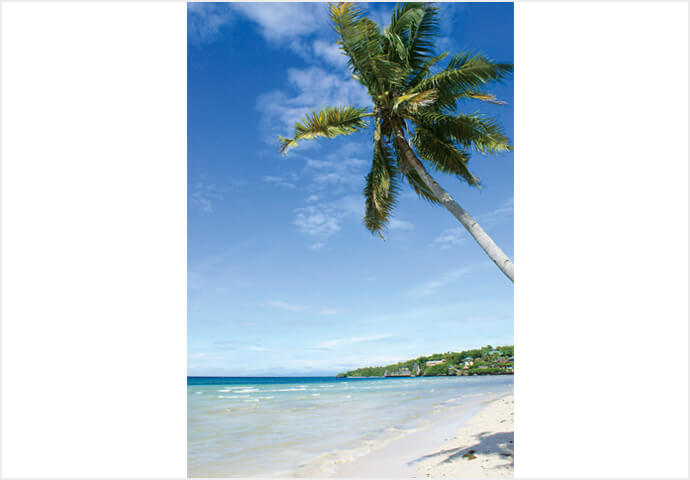
The island road that connects many beaches and futures
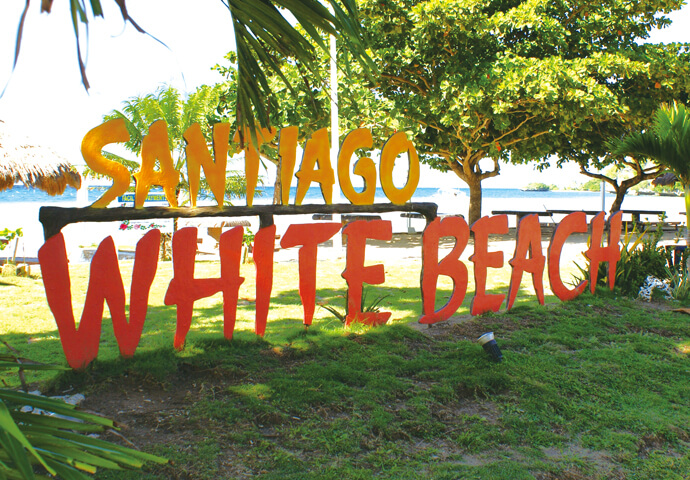
The Camotes Islands is bigger than Mactan Island and has mountains, lakes, and caves. Although there aren't many big resorts yet, you can see many beautiful beaches from Consuelo Wharf, the entrance of the Camotes Islands, to Santiago White Beach. There are even some small beaches that haven't been named yet. Since the Camotes Islands hasn't been commercialized yet, you can truly experience the wonderful "southern island tropics" here.
The roads in the southern part of Pacijan Island are mostly paved and many people use motorcycles for their daily transportation. You can see construction work on many main roads, connecting the north and Poro Island. You can also see construction on hotels and tourist spots, like they're working hard to breathe in more life, make everything "more beautiful", "more wonderful". Even in Cebu, you can hear people saying "It seems like the Camotes Islands is good". The majority of Camotes Islands visitors are European, not many Japanese visitors yet.
The future of lots of people coming and going on nice roads isn't so far off. Walking around beaches, kayaking on lakes, adventuring into mysterious caves and delicious dinners at resort hotel at night, all of these things lead the Camotes Islands to a bright future.
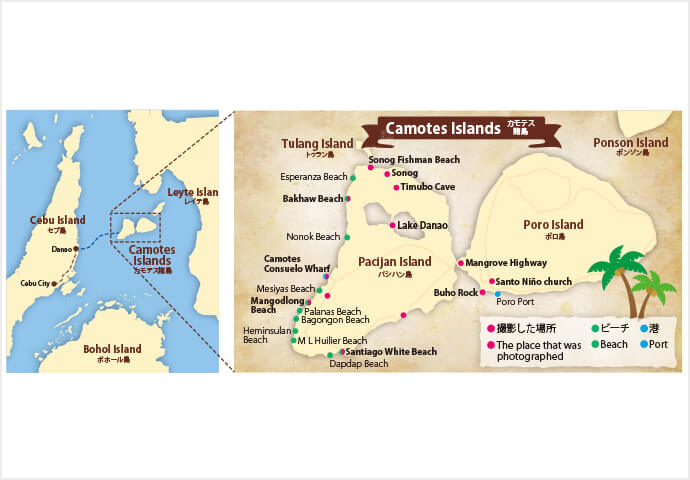
The Camotes Islands is surrounded by Cebu Island, Bohol Island, and Leyte Island with Pacijan Island right in the middle.
On the corners and intersections of Pacijan Island are postings like directions and advertisements for resort hotels. The islanders are not so used to foreigners, but if you ask them for directions, they'll show you the way with a smile.
Santiago White Beach
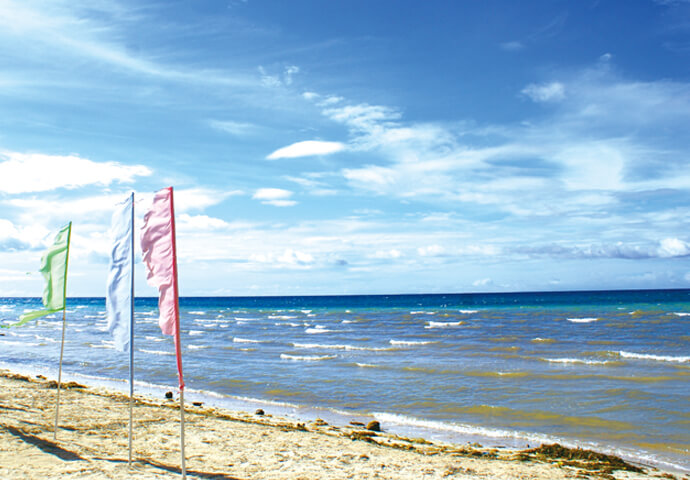
Santiago White Beach in Pacijan island is public.
Santiago White Beach is the largest beach in the Camotes Islands. The shallows seem to stretch out farther than any other beaches in these islands. There are some elders who clean the beach in the early morning. The strong sun will soon appear. Meanwhile, a young family leisurely eats breakfast in a beach hut. Nearby are some resort hotels that blend well into the landscape. These Camotes Islands are getting more and more popular now, especially among young people.
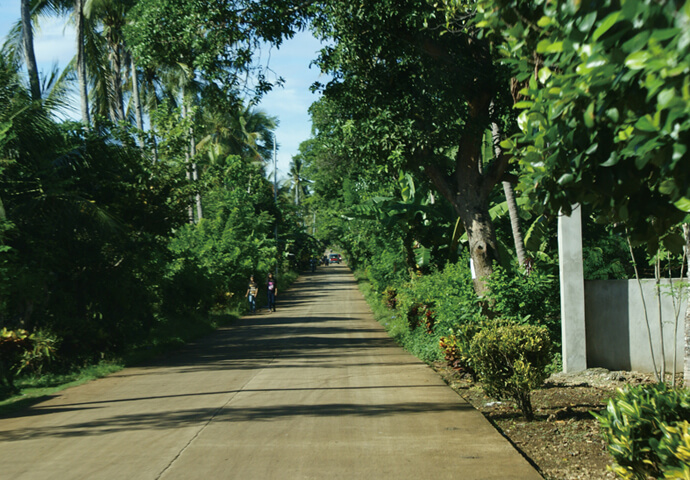
The roads from the wharf to Santiago are paved in comparison with the northern part of Pacijan Island.
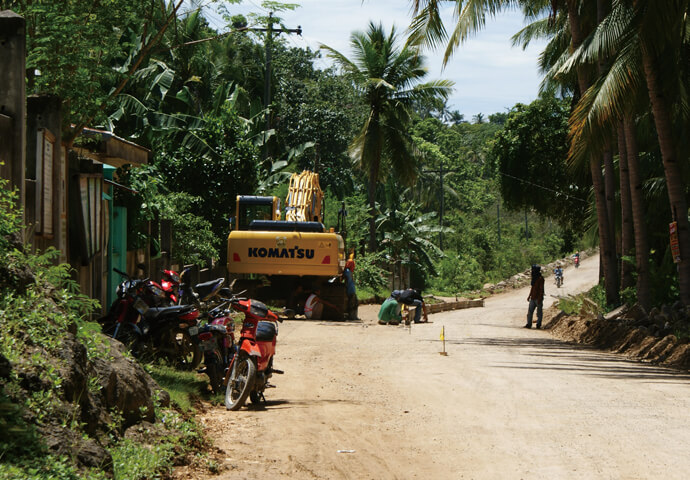
As you approach Poro Island, you can see the expansion work done by large industrial machines.
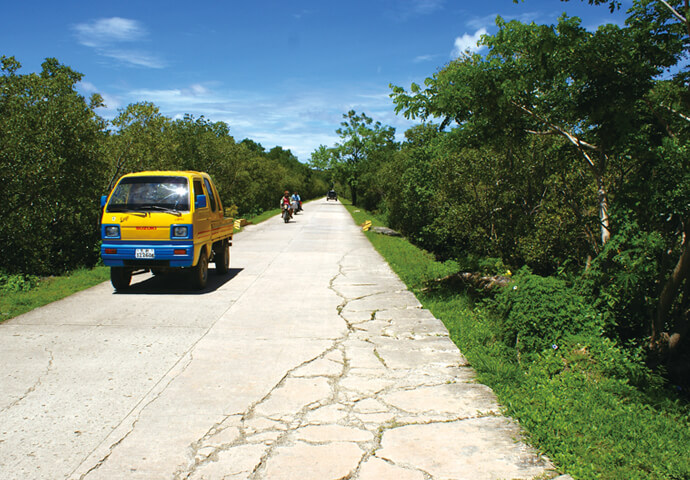
The straight Mangrove Highway which connects Pacijan Island and Poro Island.
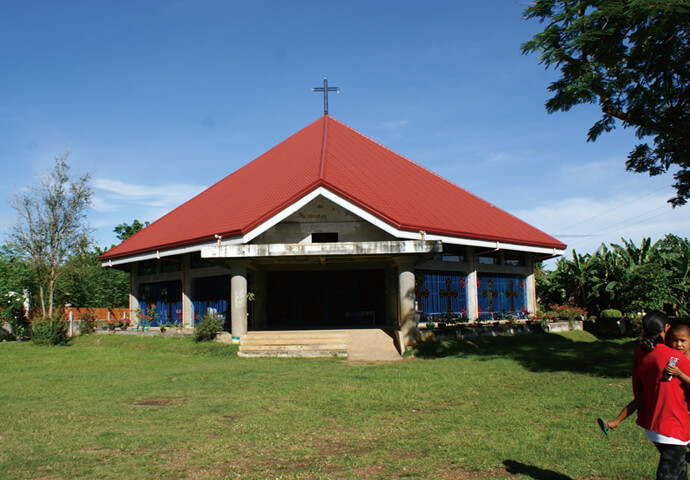
The triangle-shaped roof church near Consuelo Wharf shines nicely under a blue sky.
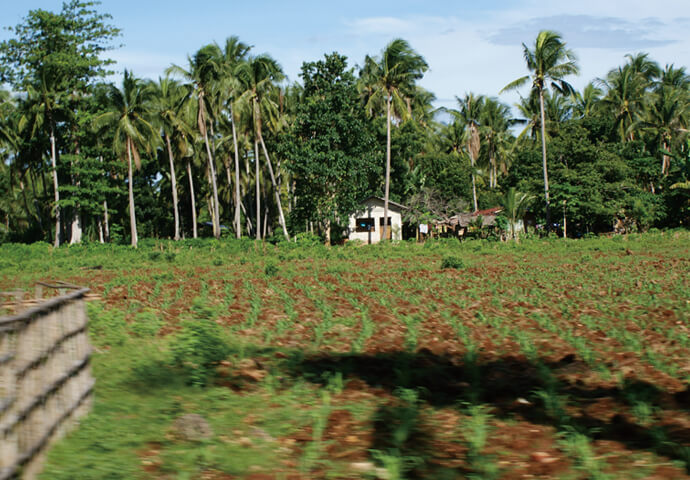
Palm tree forest and field. White maize is dried on the roadside.
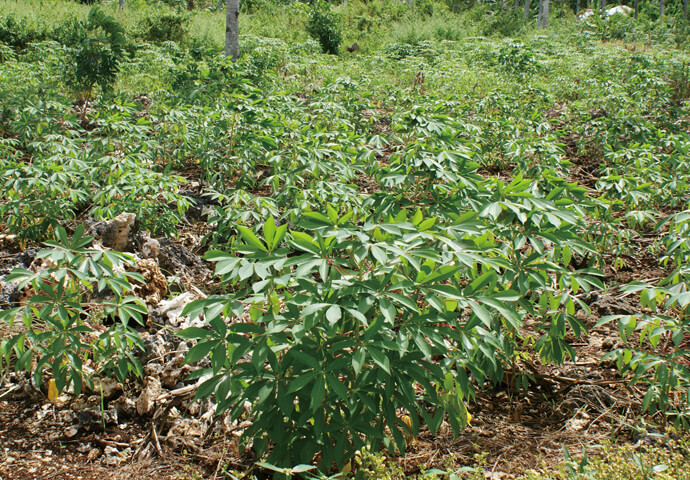
A field of kamote, a root crop that grows in palm tree thickets.
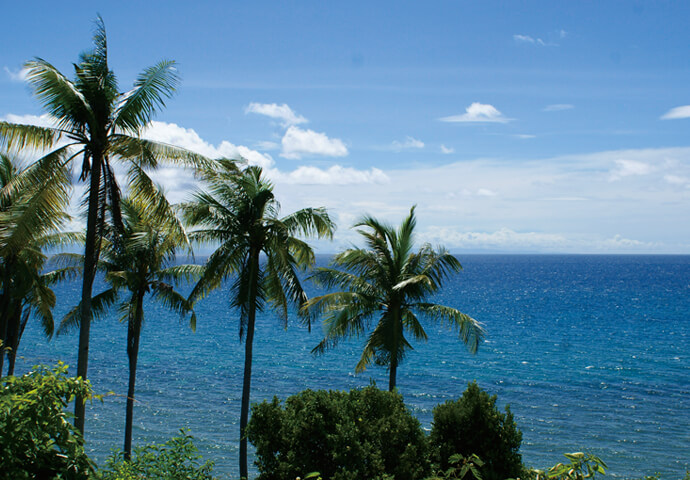
The blue skies and azure sea seen from the undulating road that runs along the coast.
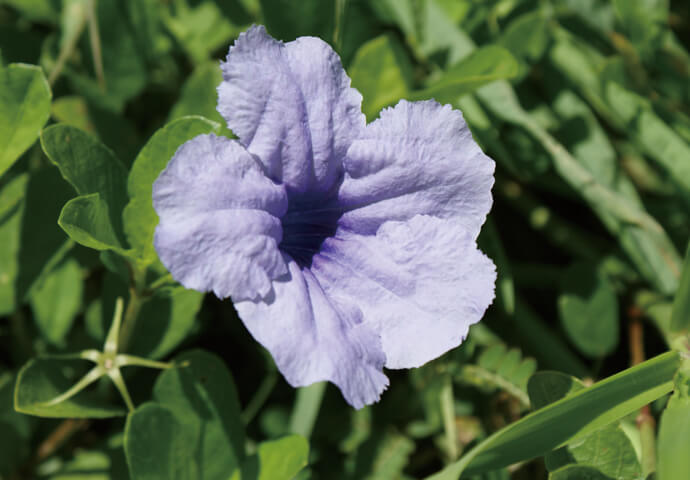
Small purple flowers along the roadsides soaking up the bright sunlight.
Buho Rock
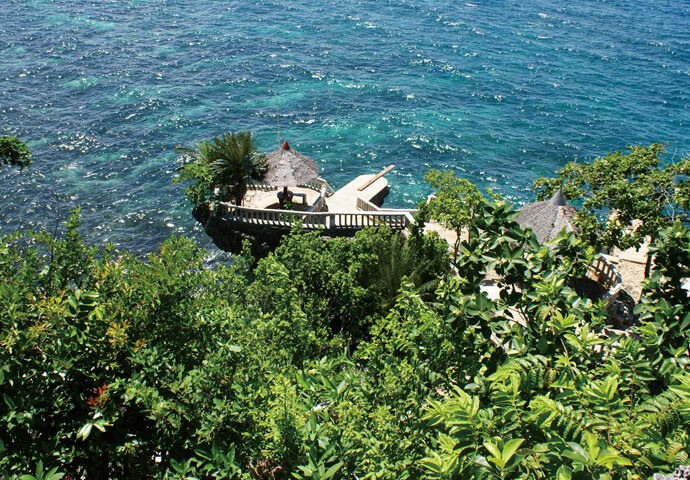
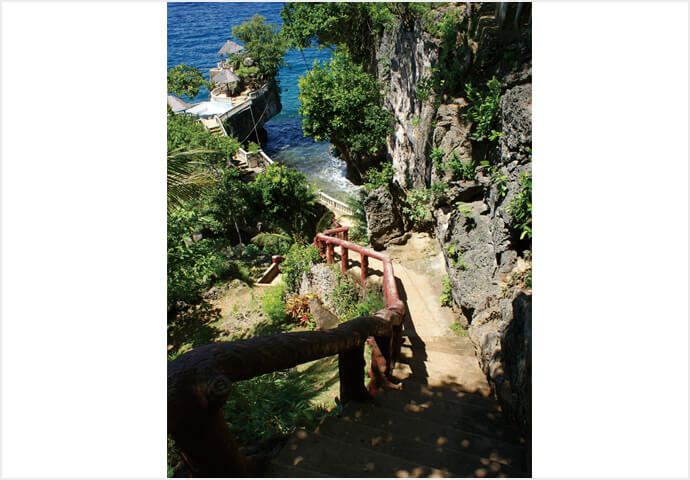
A rocky cape on Poro Island. If you go down the steep stairs along the cliff, there is a large rock coming out of the ocean. That is Buho Rock. On Buho Rock are three diving boards that stick out with the azure ocean awaiting below. The diving boards are divided into three different heights. It can't be denied that the boards are weathered from direct sunlight and salty sea winds. It gives off an impression of wildness. Incidentally, here you can also catch a glimpse of construction workers, perhaps doing hotel renovation.
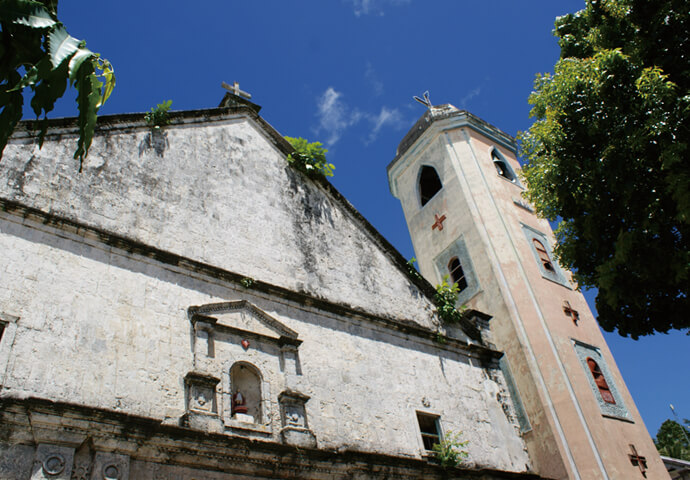

The Santo Niño church in Poro Island port town is the oldest in the Camotes Islands. Its eye-catching bell tower extends straight towards the heavens.
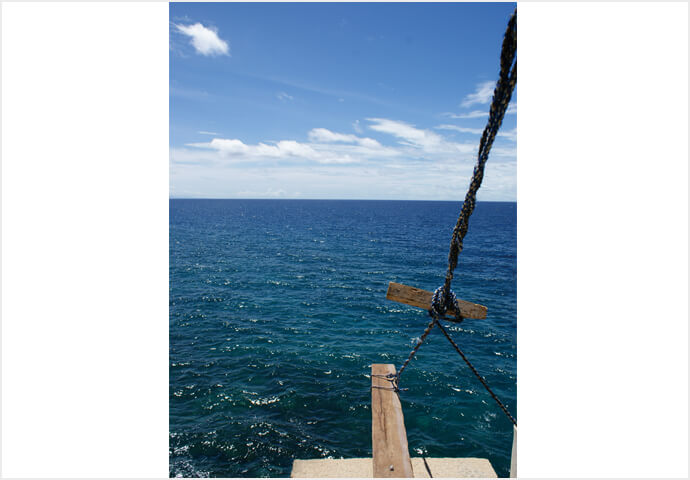
The view from the highest diving board. There is also a staff member watching out next to the boards. If you look out at the horizon, you should be able to see Bohol Island but today, we can't see anything. It takes a lot of courage and great reflexes to jump from this height. Many young people come here on their days off for a challenge.
Lake Danao
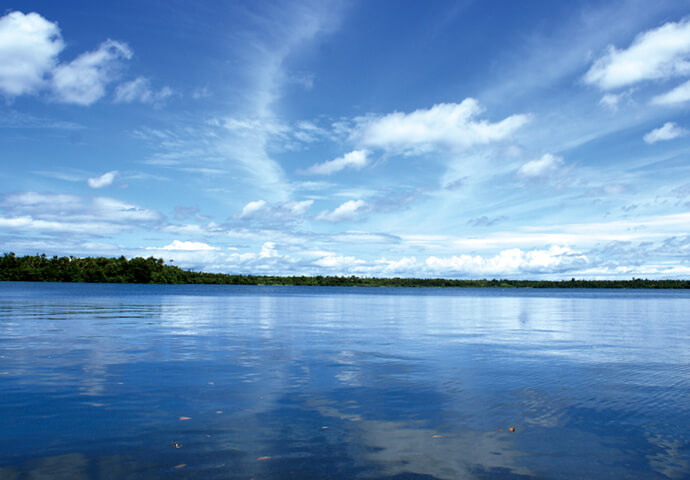
If it's this quiet, down in the sediment on the bottom of the lake, there might be ancient memories of
the Camotes Islands, no - of the Philippines, sleeping.
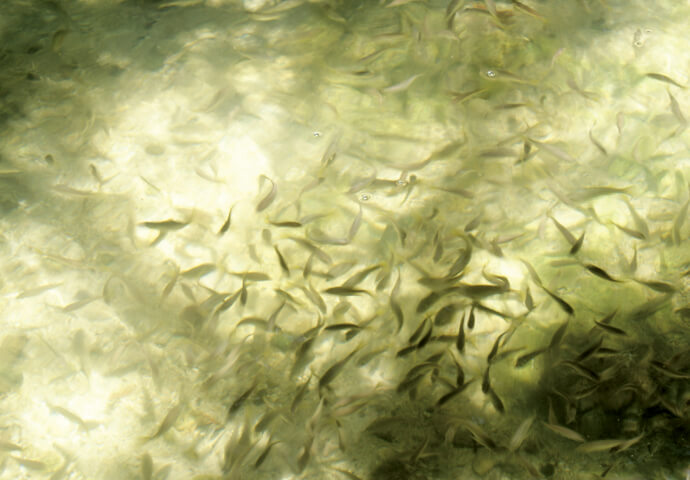
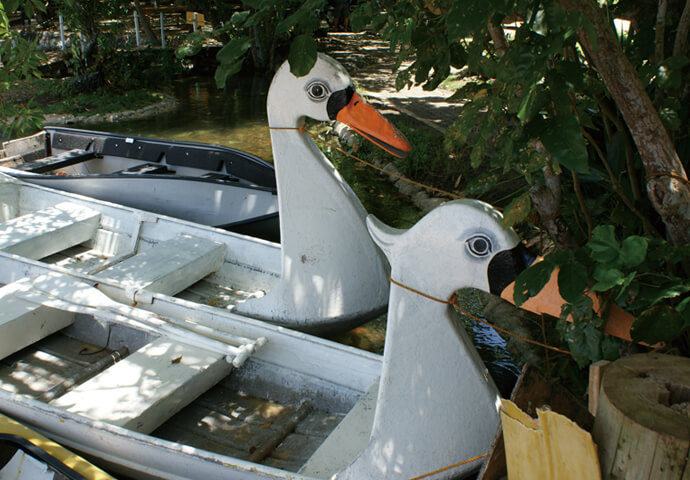
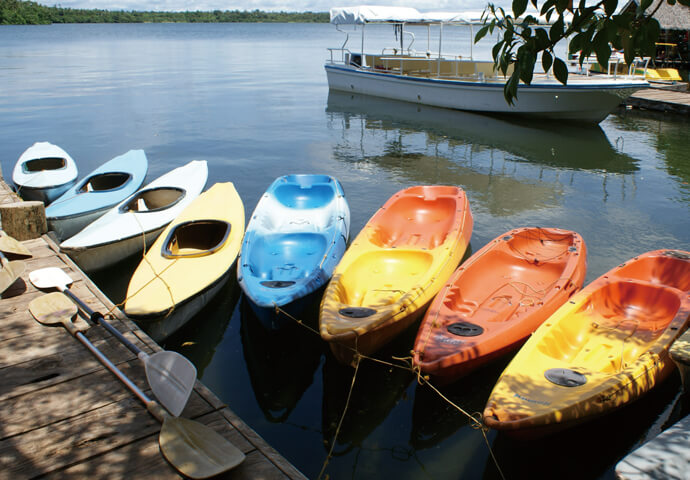
On the way to the lake, there is the crossing gate in front. You pay admission there. If you continue a little more, the quiet lake will appear. The wind is strong today, but the surface of the lake still reflects the beautiful blue sky of the Camotes. If there's no wind and no ripples, the lake would probably look like a mirror. On the side are boats shaped like swans and crocodiles (P50/30 min). Don't worry, there are no real crocodiles here. Instead, many small fish gather looking for some food. This seems like a good place for a relaxing lunch.
Timubo Cave

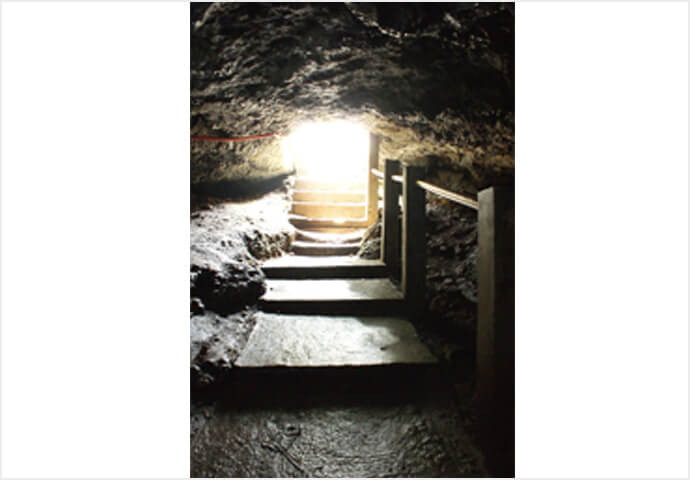
If you go down the dark and gloomy stairs, there is a big, natural pool at the back of the cool cave (Admission fee; P20). Even small children can enjoy it. It's okay to take photos but it is a definite must to bring a waterproof camera and swimsuits. If you ask the locals, they'll also be able to tell you about a number of other caves too.
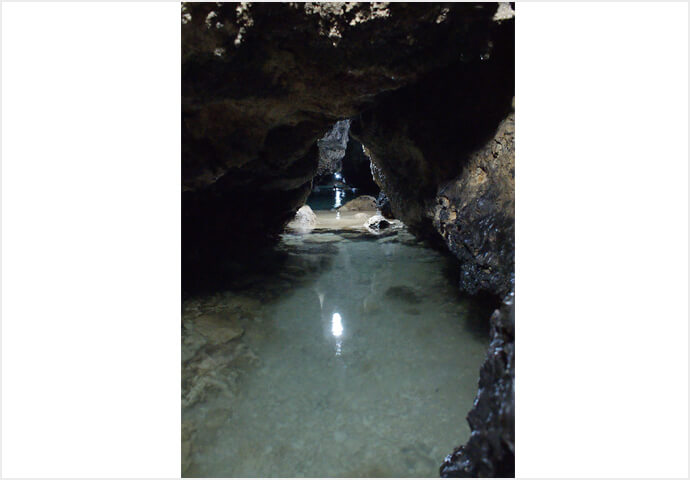
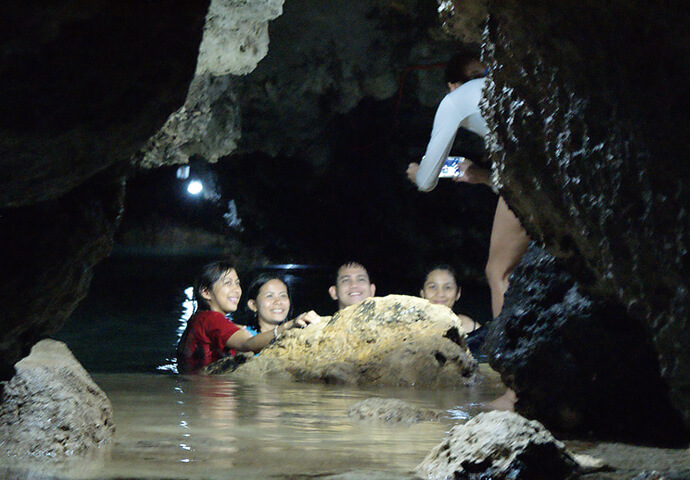
Sonog
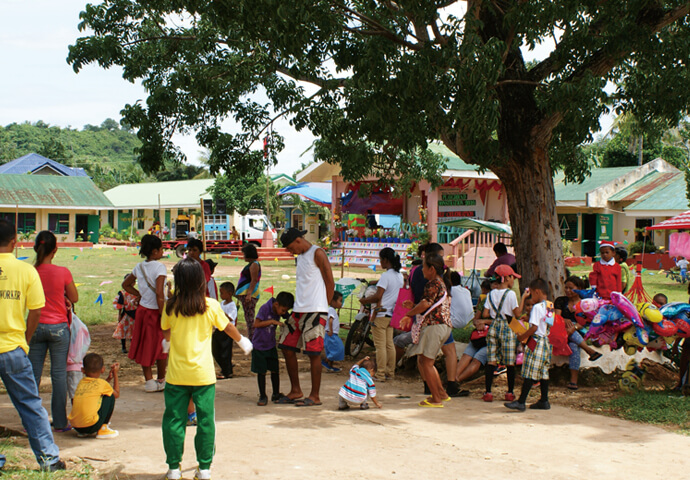
Many families and children wearing colorful costumes gather at a school for a Christian festival. Parents care about their children in any country. People watch the stage preparation, safe in the shadow of a big tree from the strong sunlight. On this faraway stage, the gospels sing out at megavolume.
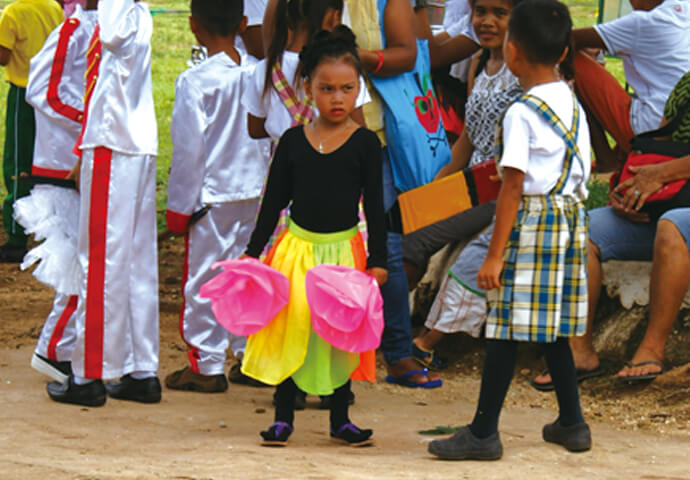
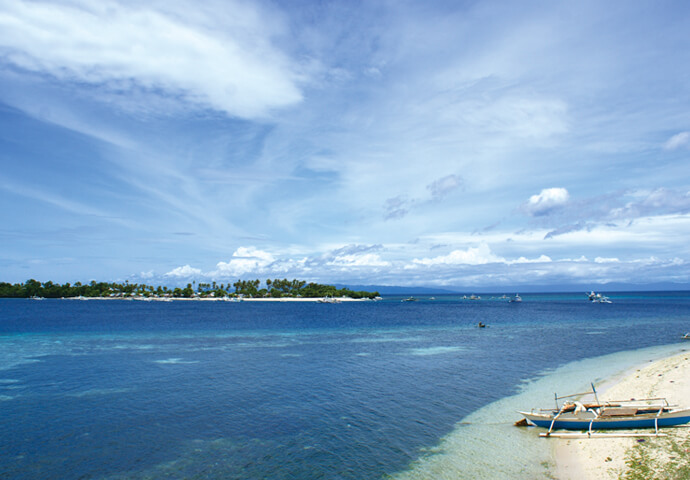
It seems like you can cross and walk until Tulang Island.
Bakhaw Beach
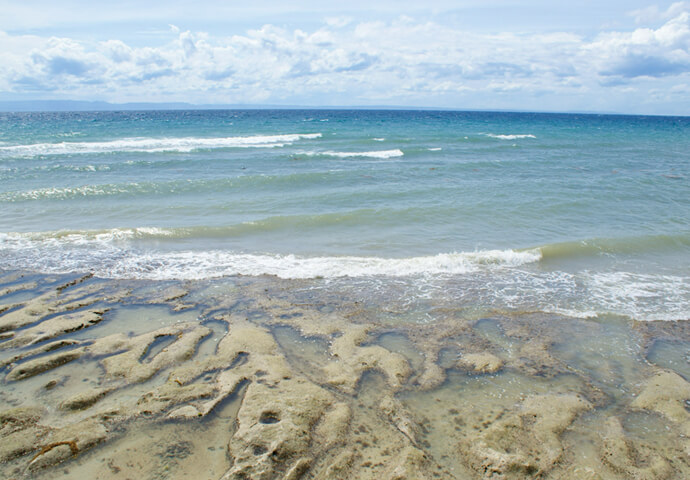
A long beach where time passes peacefully. The winds and waves are strong today but, that's probably from the typhoon passing through the northern Philippines. Children with their families, are chasing after a beach ball for hundreds of meters, laughing joyfully. There are no large resort hotels overlooking the sea. There are also no shops around here. These absences are the ultimate luxury.
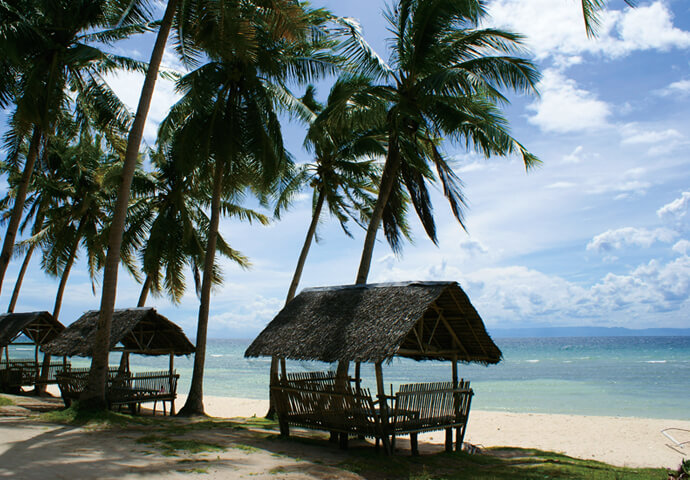
A long beach for a leisurely stroll. Take a break and gaze out at the shadows of the palm trees spreading out towards
the shallows and Cebu Island.
Mangodlong Beach
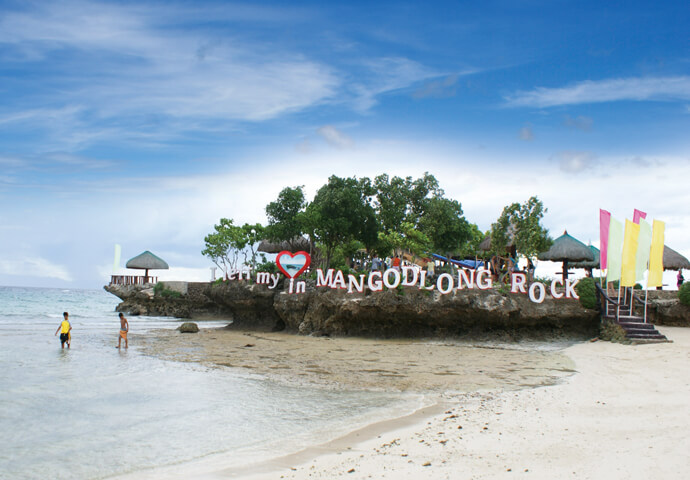
A private beach for relaxing while looking out at Cebu's Danao Wharf. The admission is P20/person. It's a small beach but the shallows are wide, so it's a good place for small children to play. There is a hotel around here.

This beach is popular among young people. Taking a rest after some excitement. They smile and say, "Take a picture of us!" They really enjoy pictures.
Information
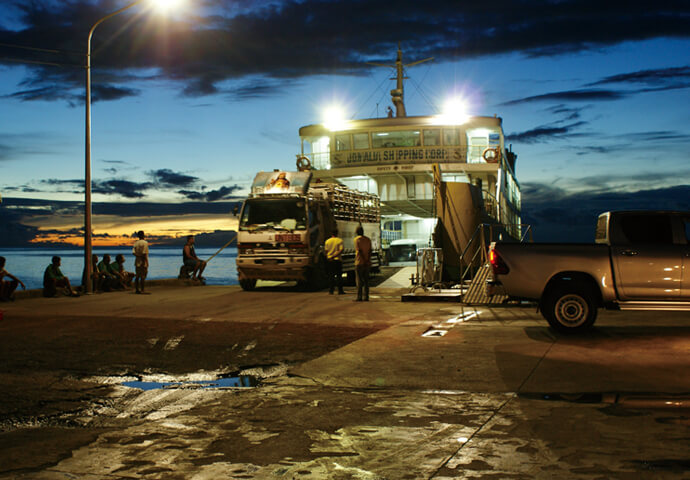
It takes 2 hours and 30 min from Danao Wharf to Camotes Islands by ferry. There are 3 ferries in the morning (5:30am, 8:30am, & 11:00am). The last return ferry from the Camotes Islands is at 5:00pm. The fee is P180/person for one way. The wharf tax is P5-10/person. If you take a car, you would need to pay P1,200 for the car fee in addition to your ticket, plus P300 for tax. The most common way to go around in the island is by motorcycle. A rental motorcycle with a driver is about P500/day. No reservation is needed, since you can find them anywhere. ※Please double-check the departure schedules and fees in advance.
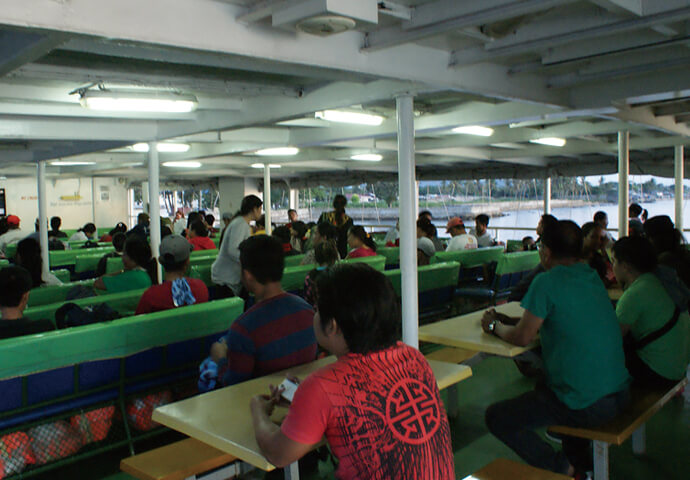
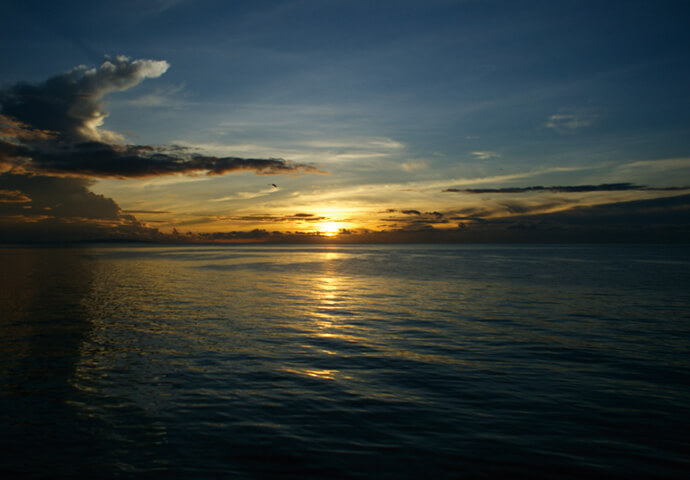
Danao Wharf before departure and the dawn seen from the ferry.
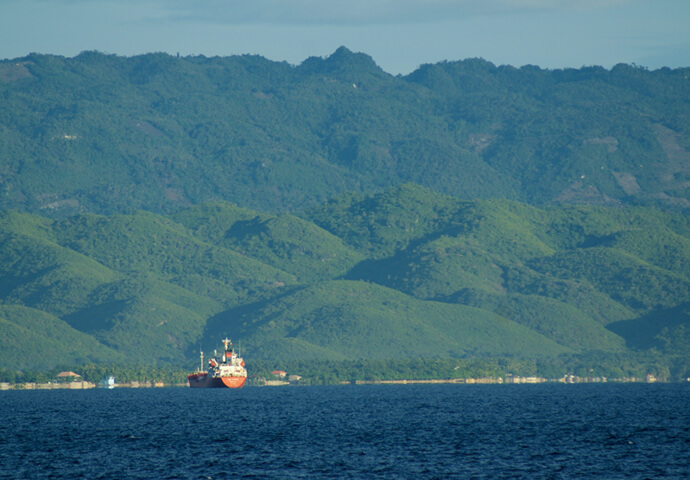
If you look back a while after departing from Danao Wharf, you can see small mountains that look like the Chocolate Hills. The ridgeline also looks like Osmeña Peak.

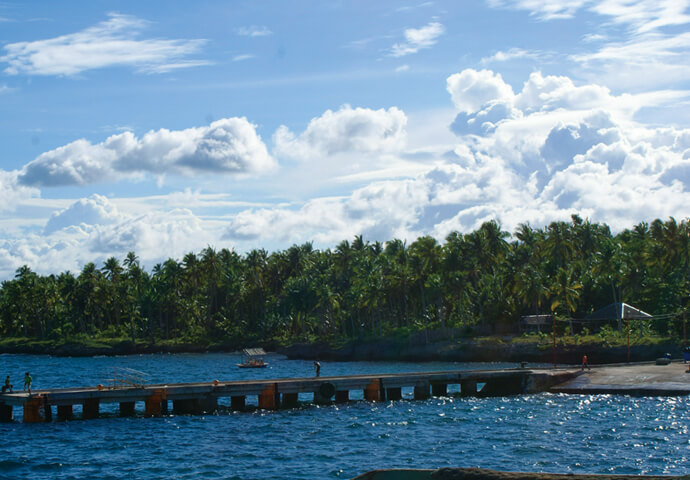
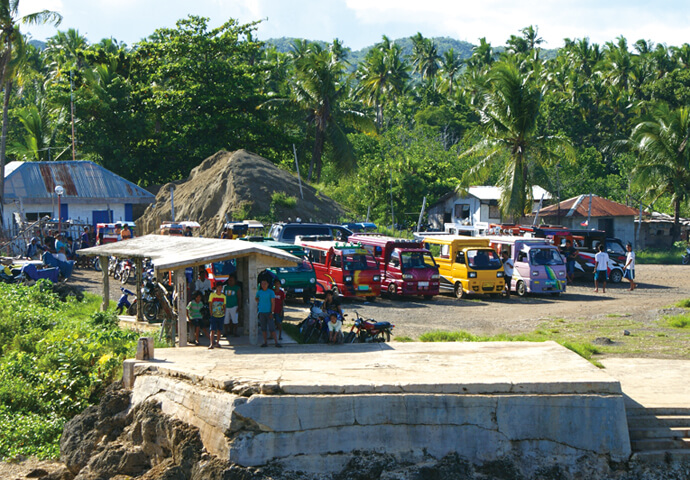
Camotes Consuelo Wharf which waits for the arrival in port of the ferry
Back to the list






